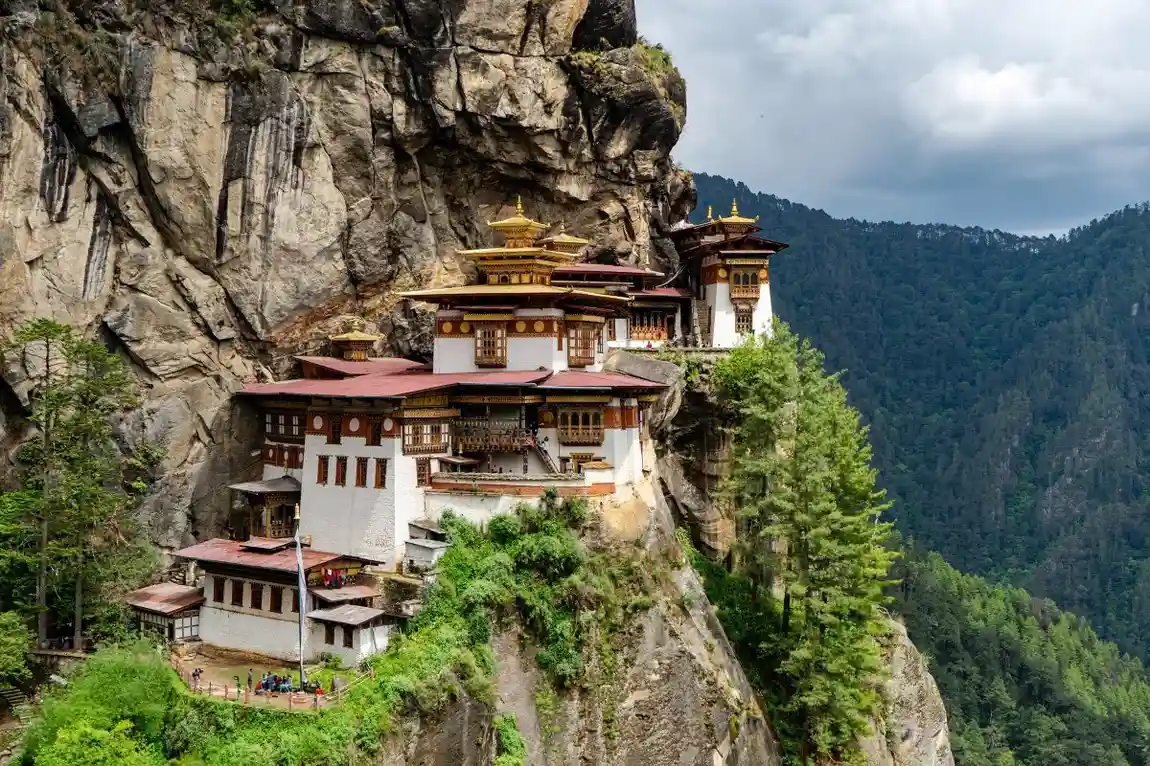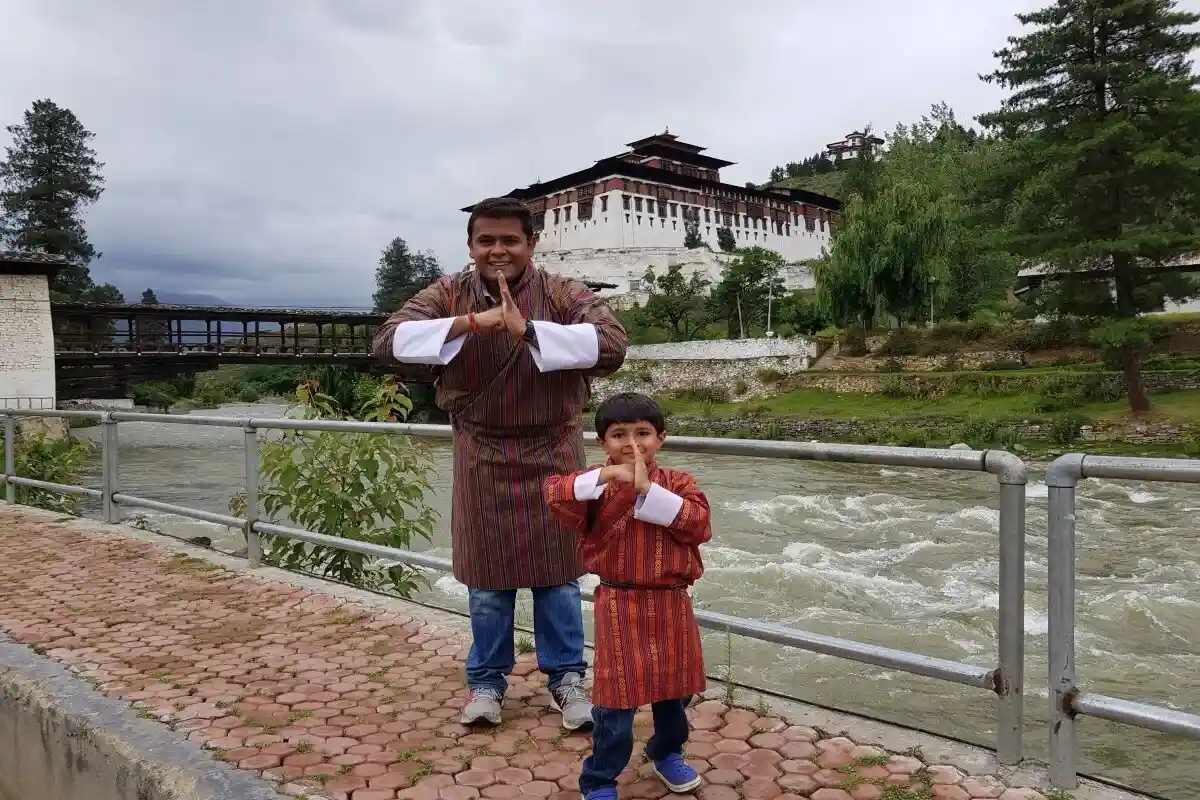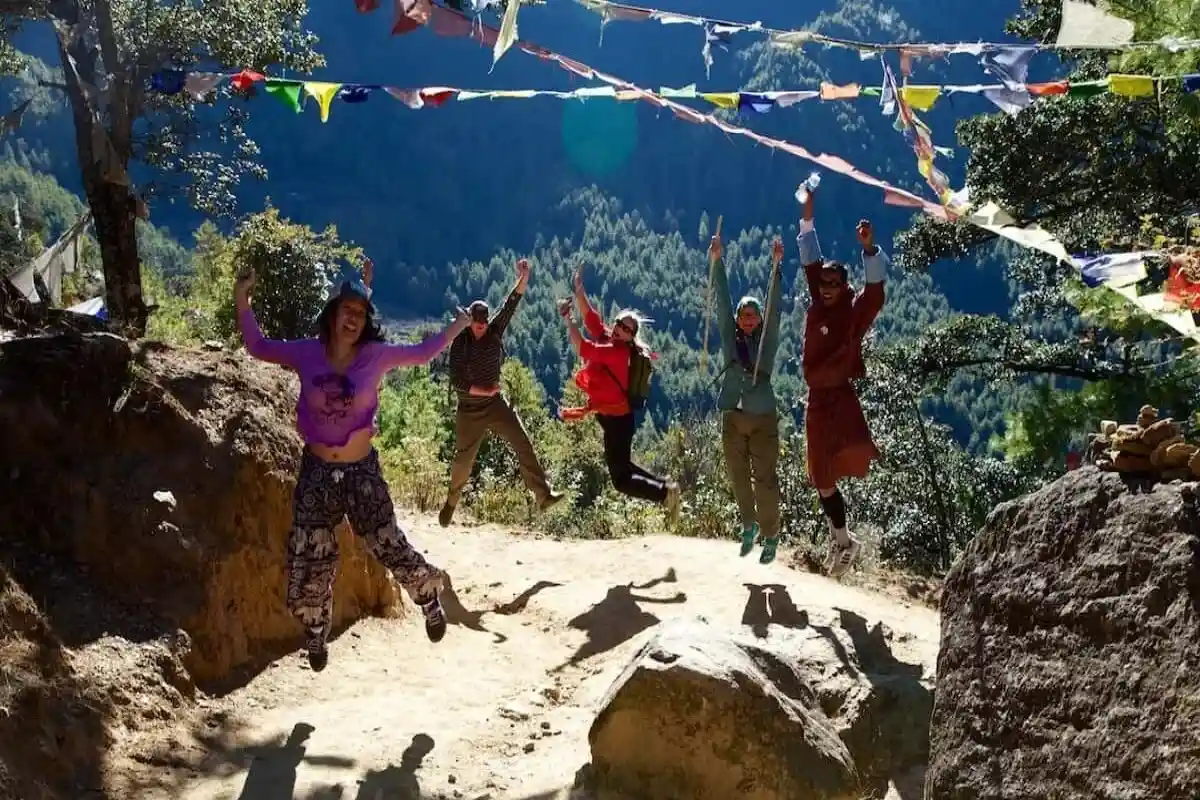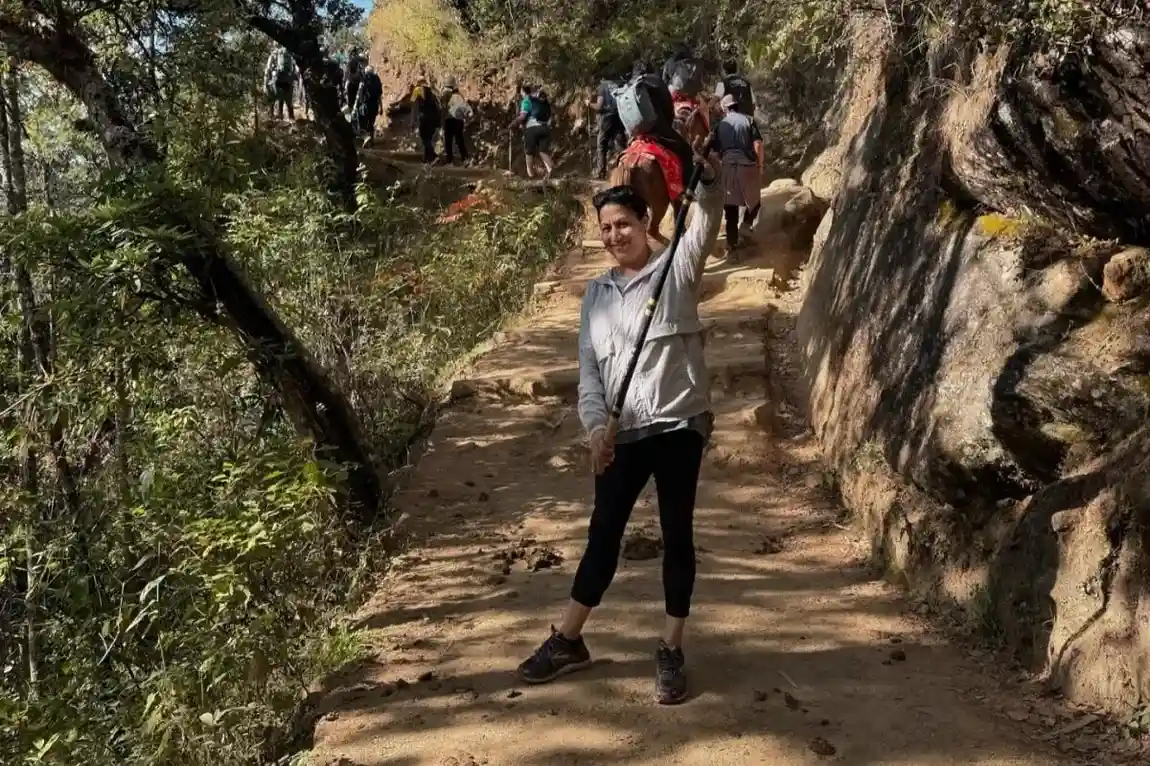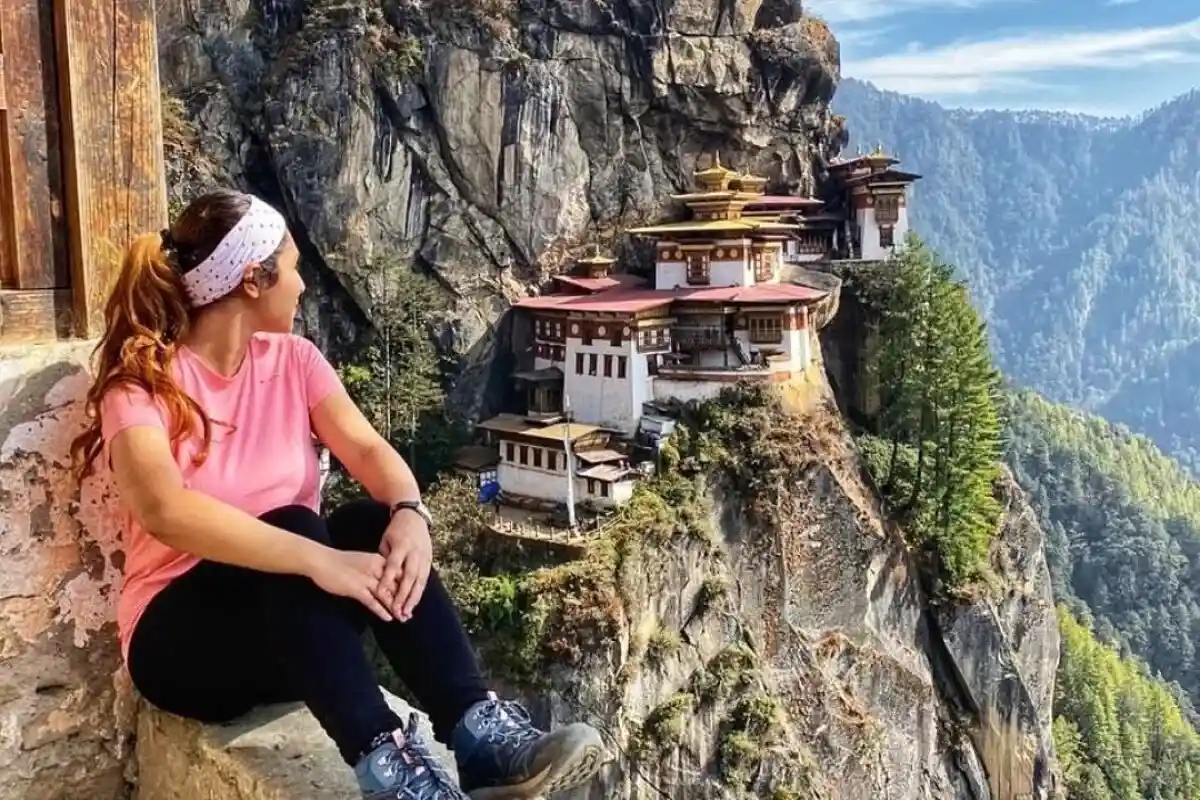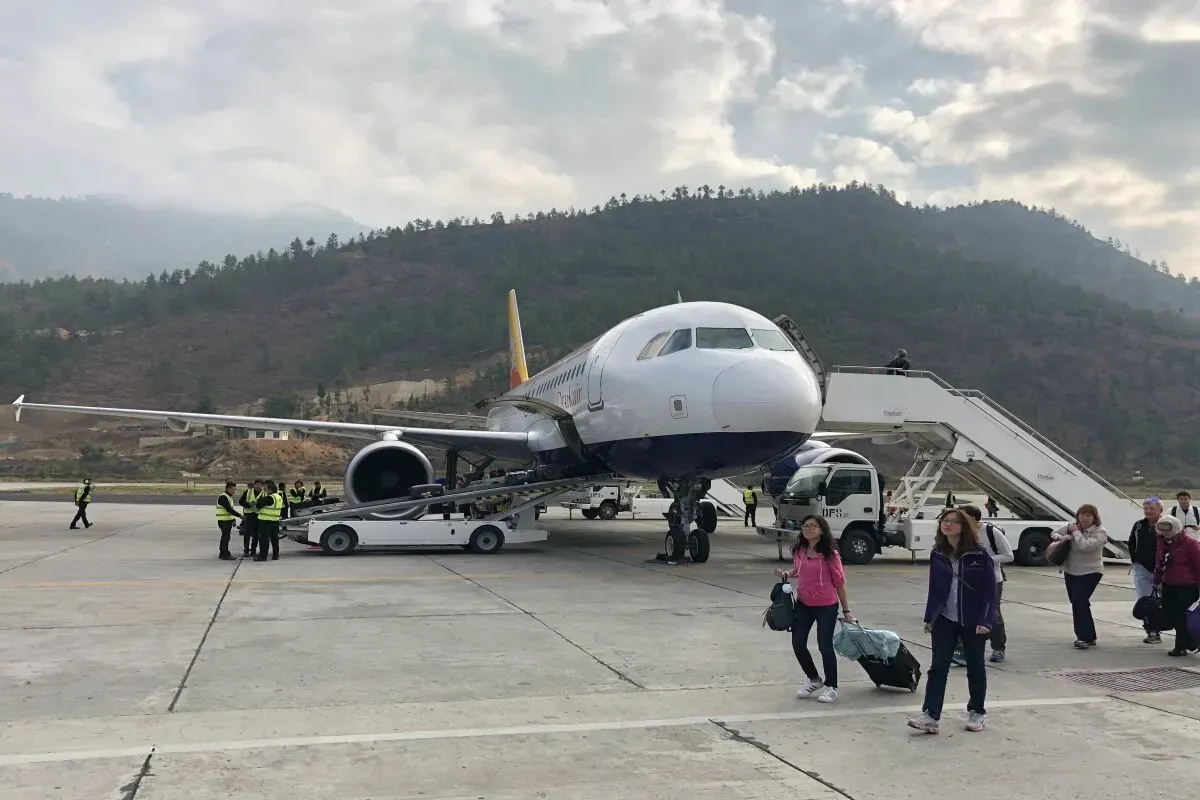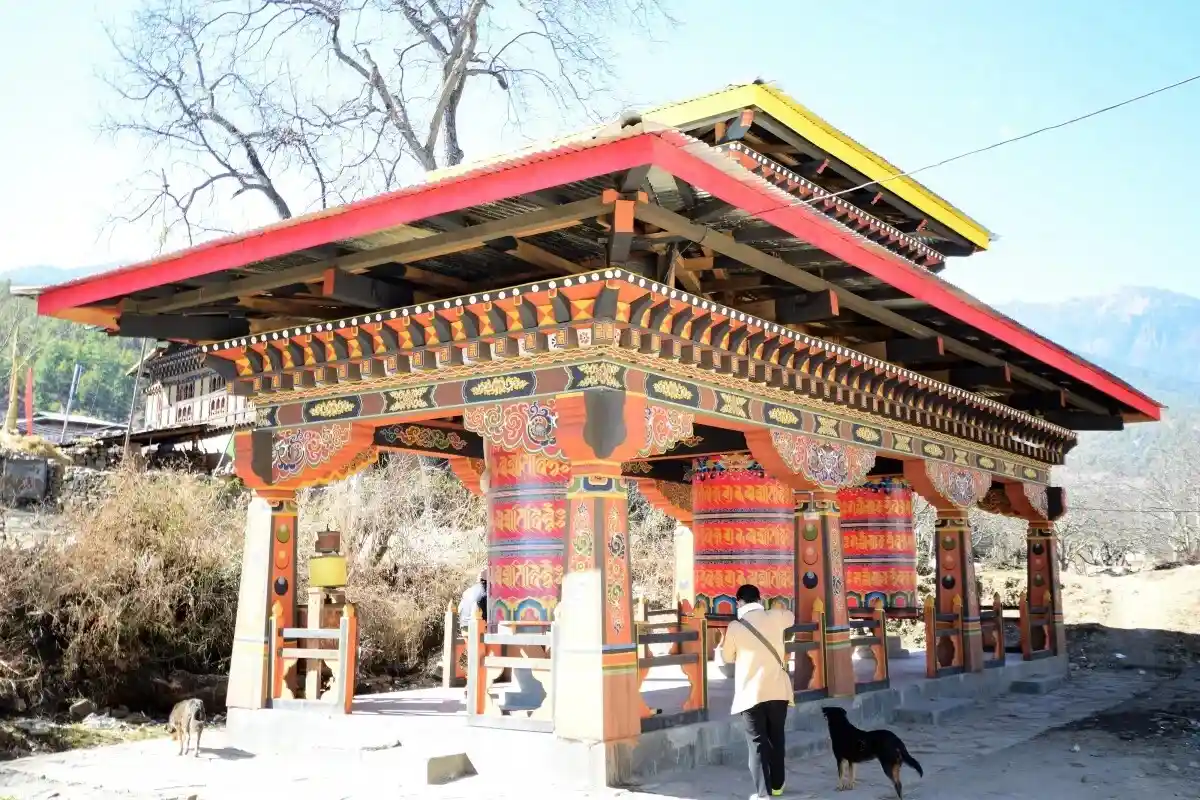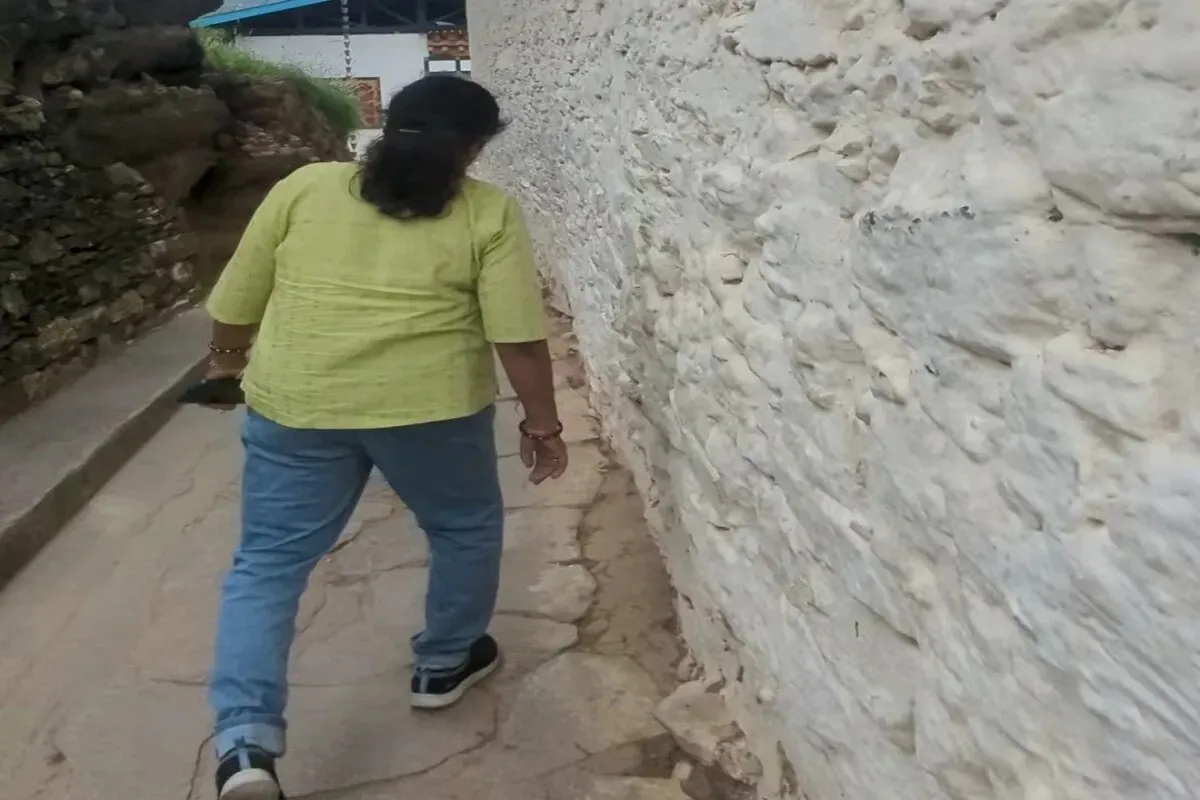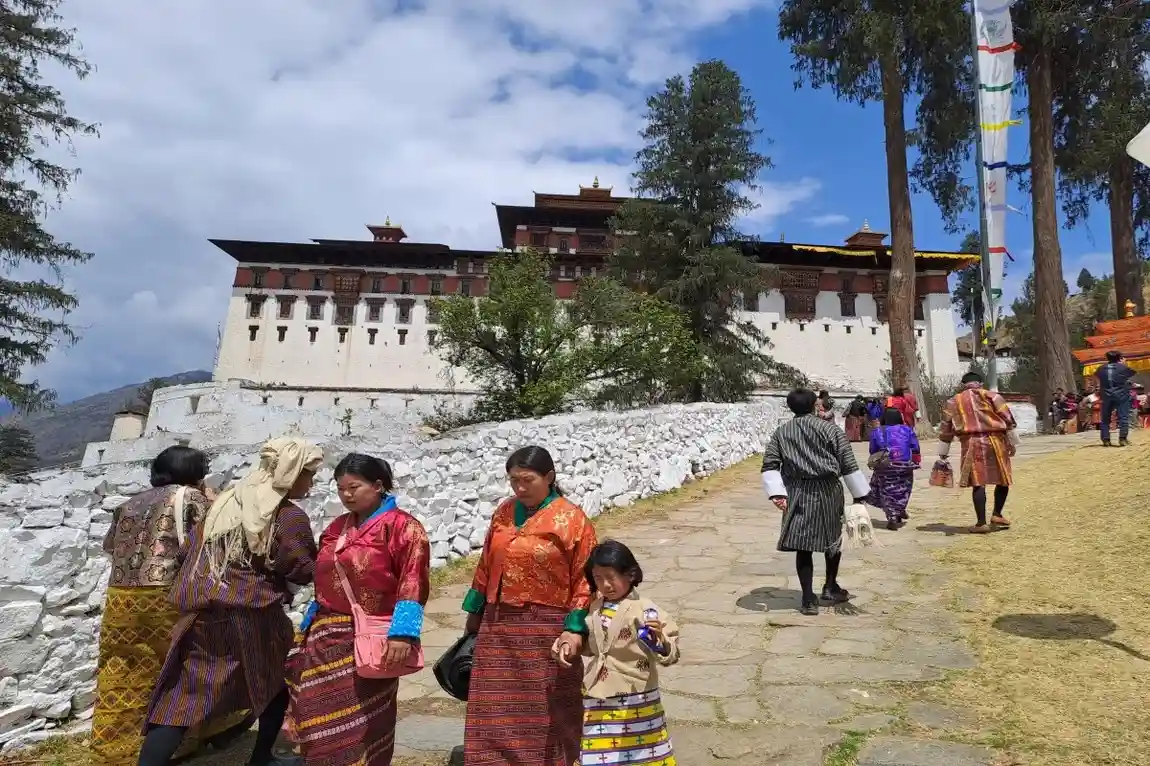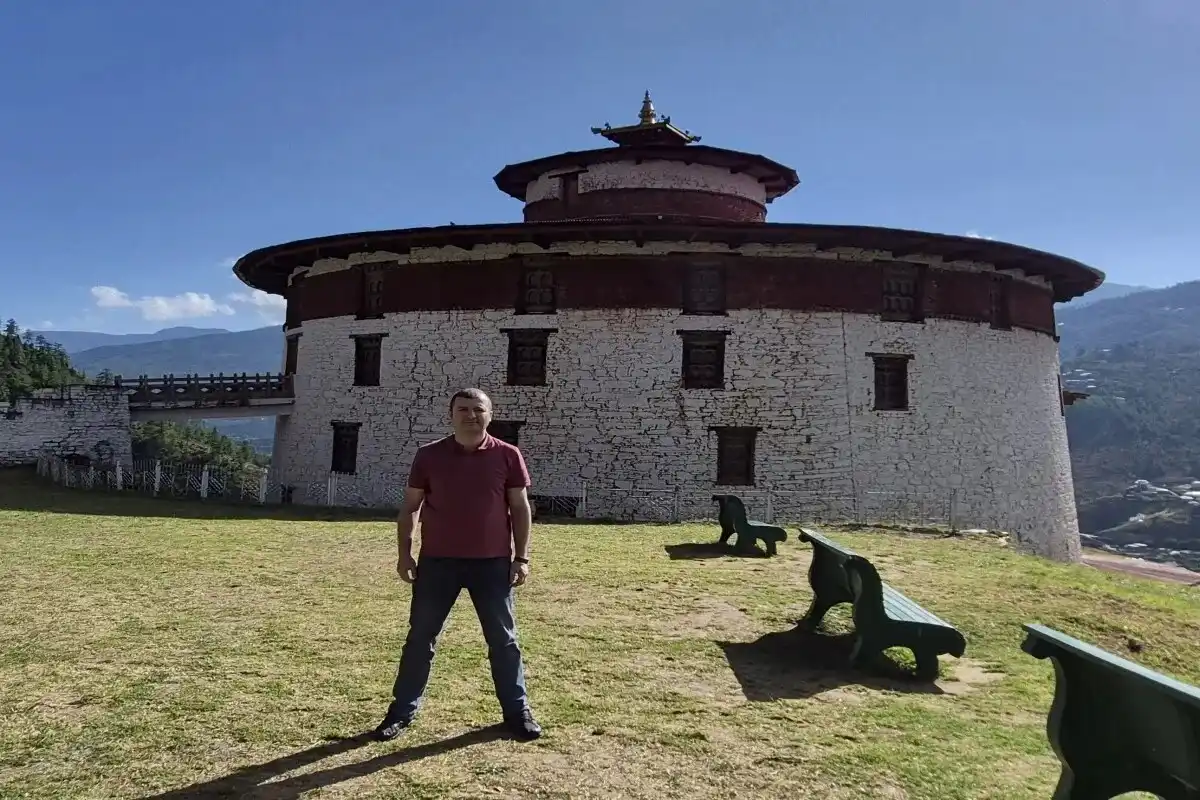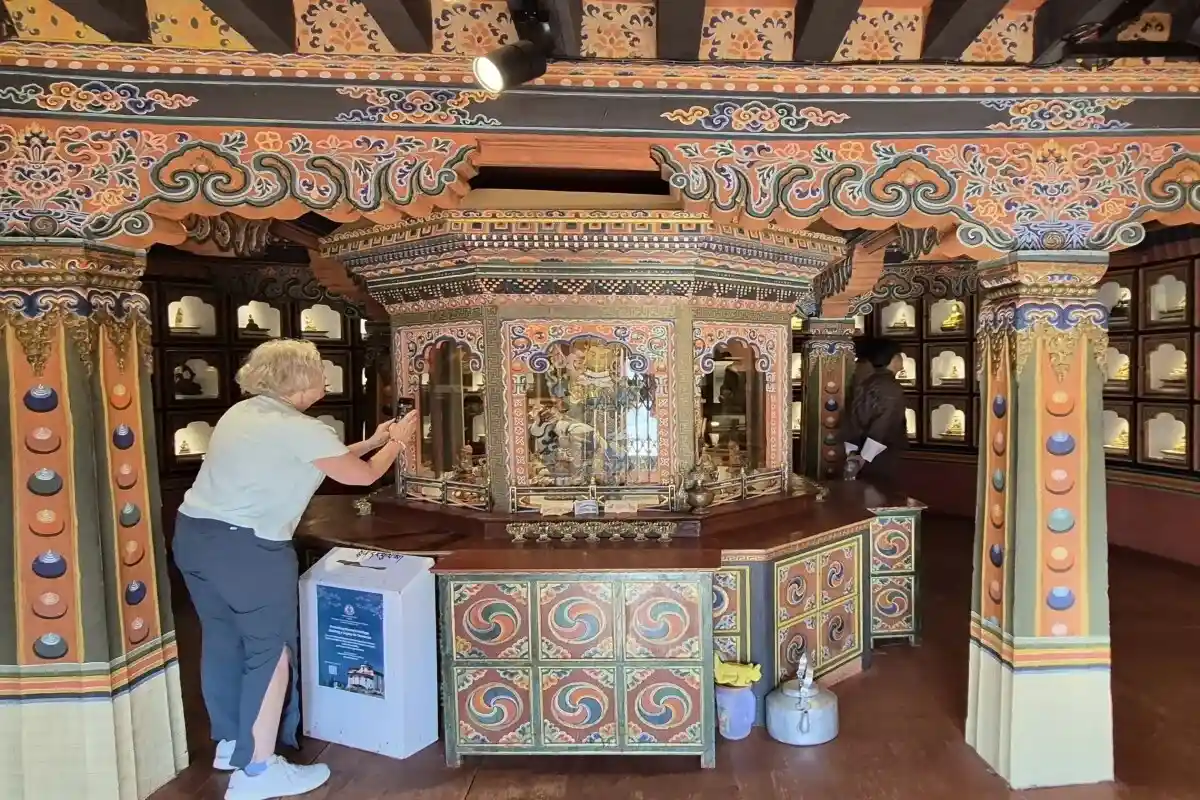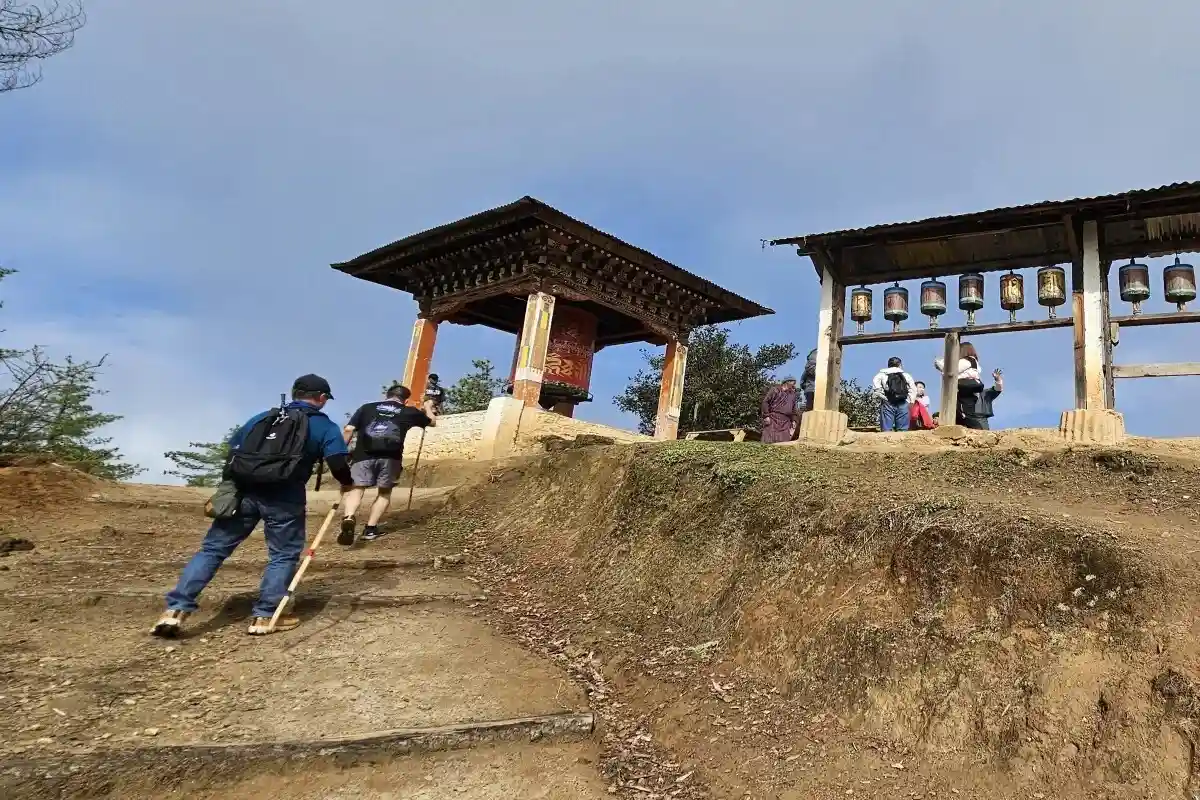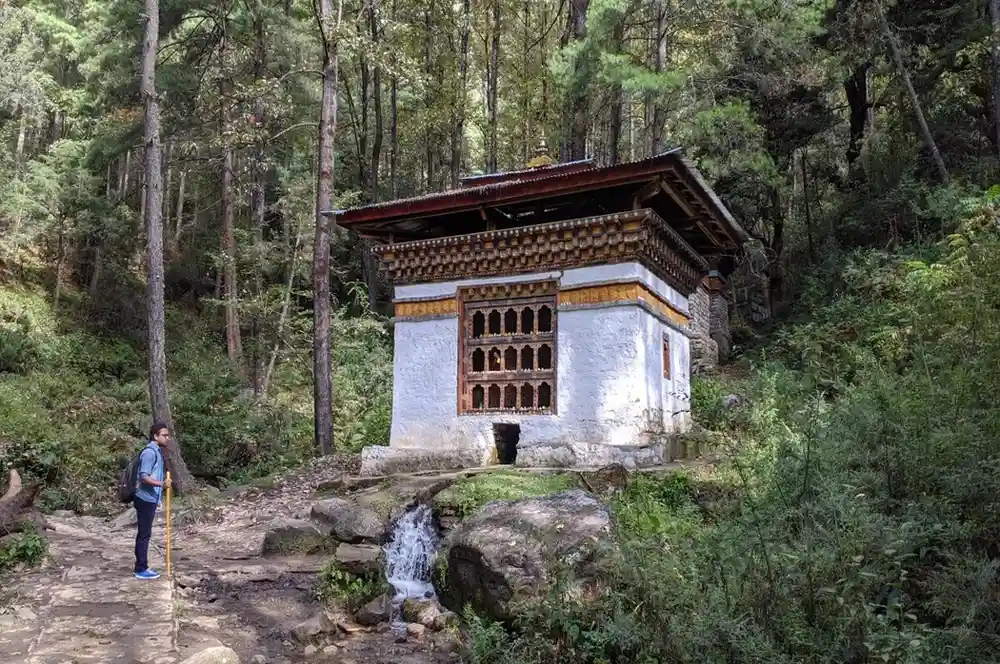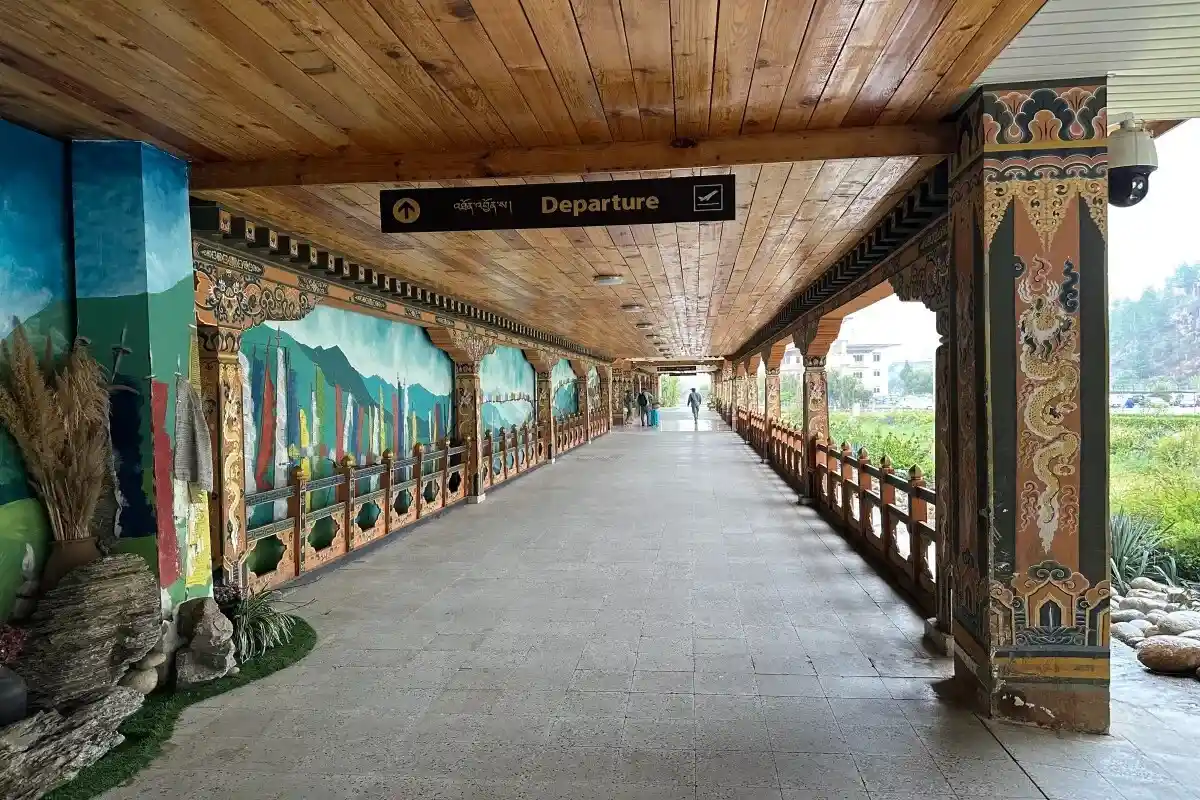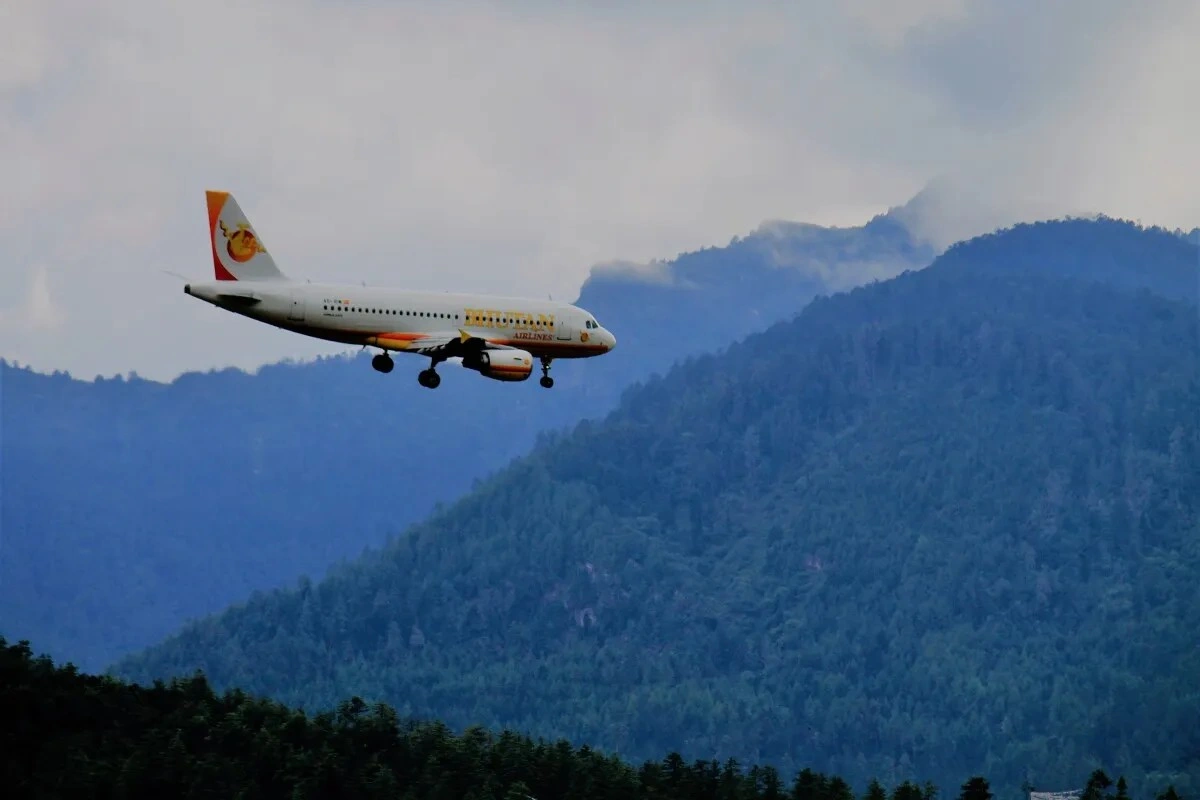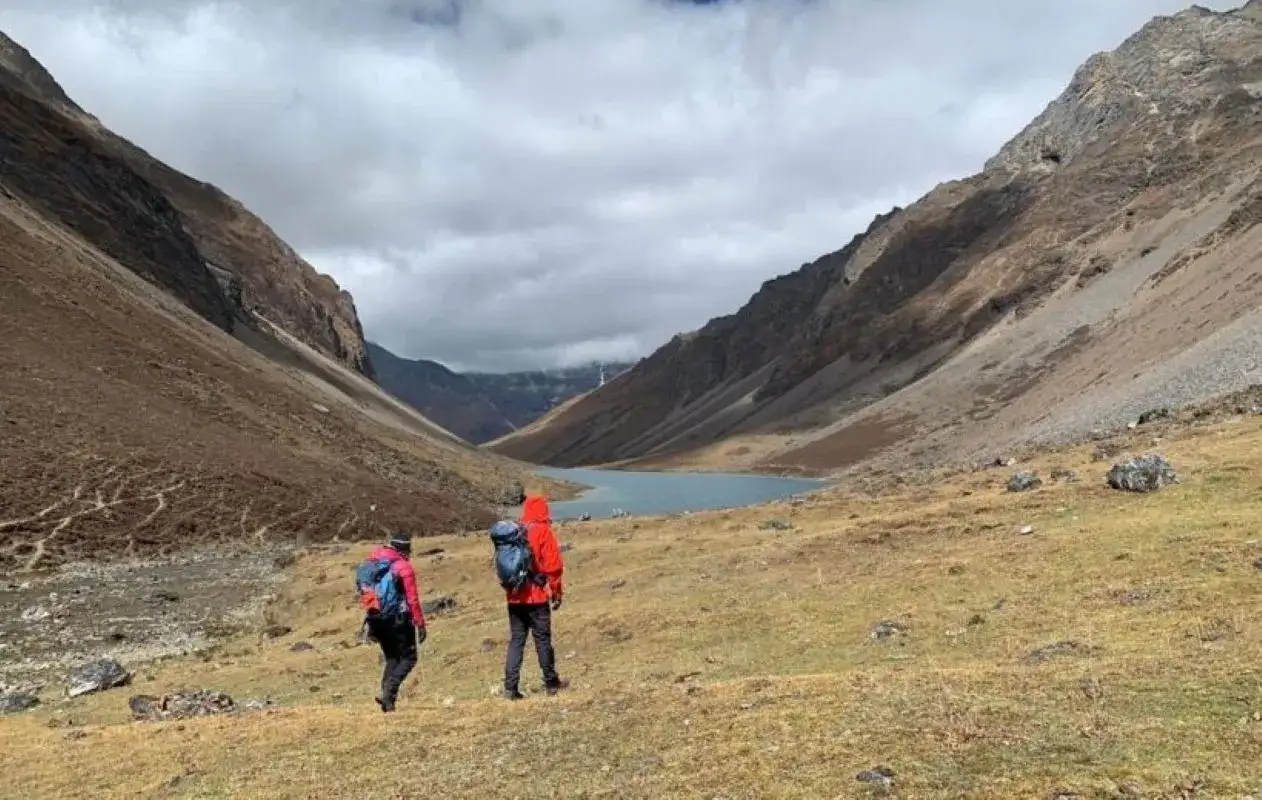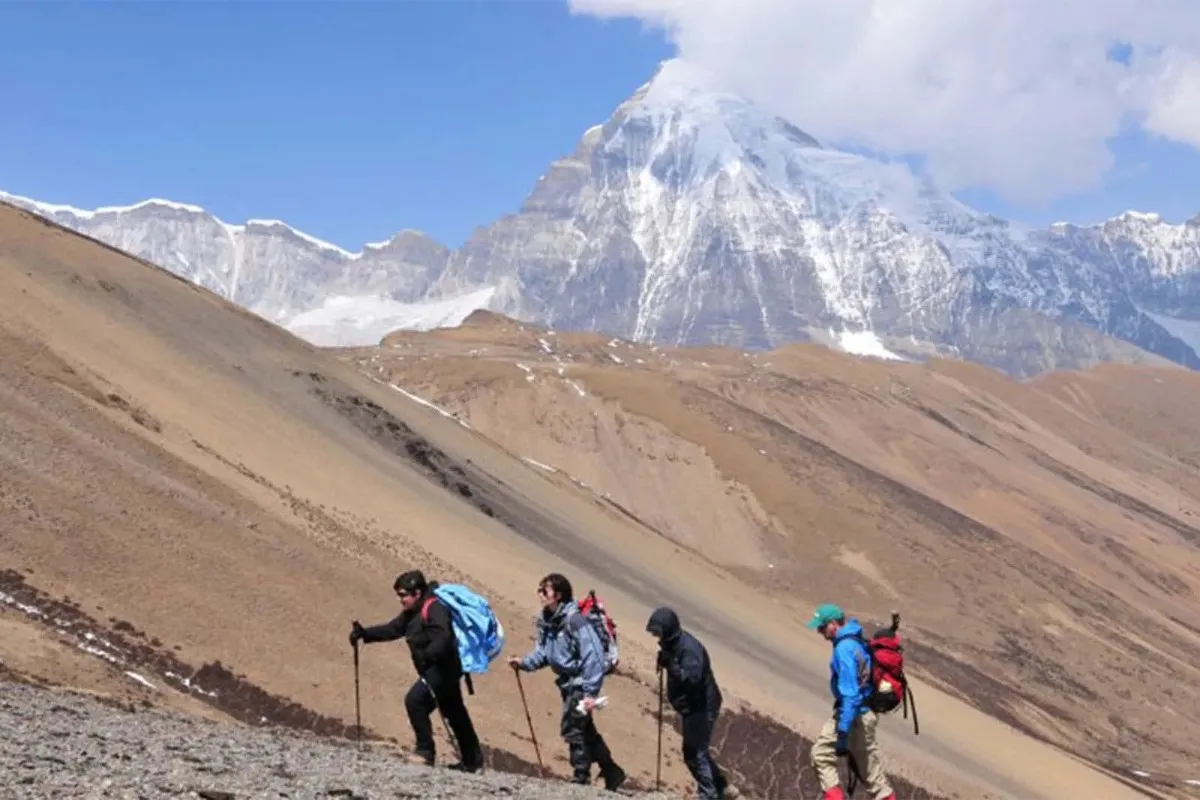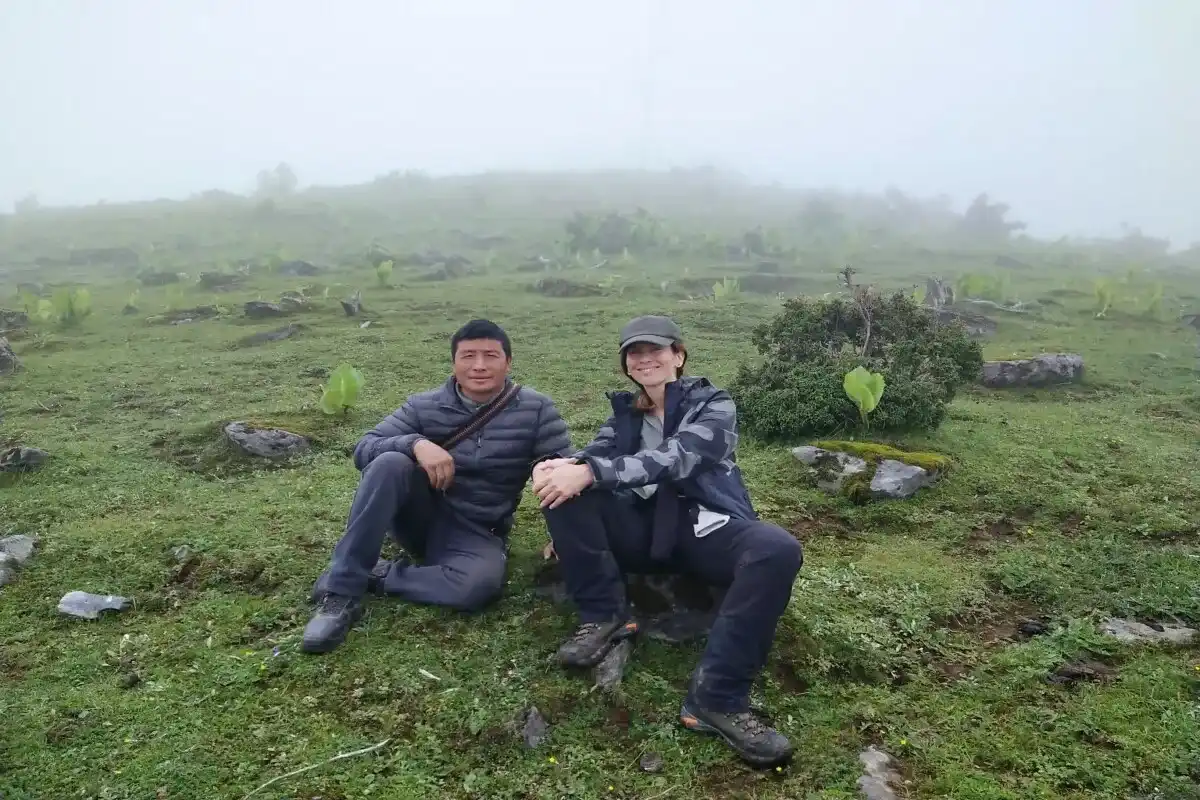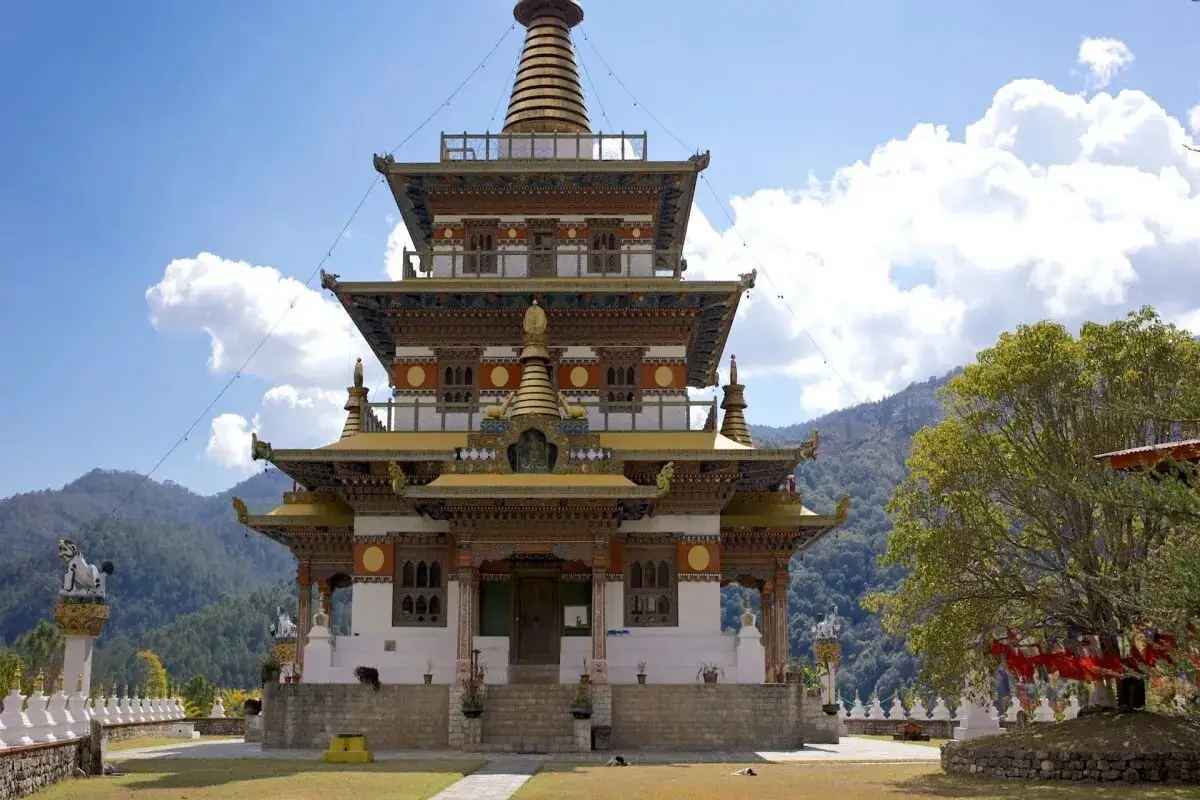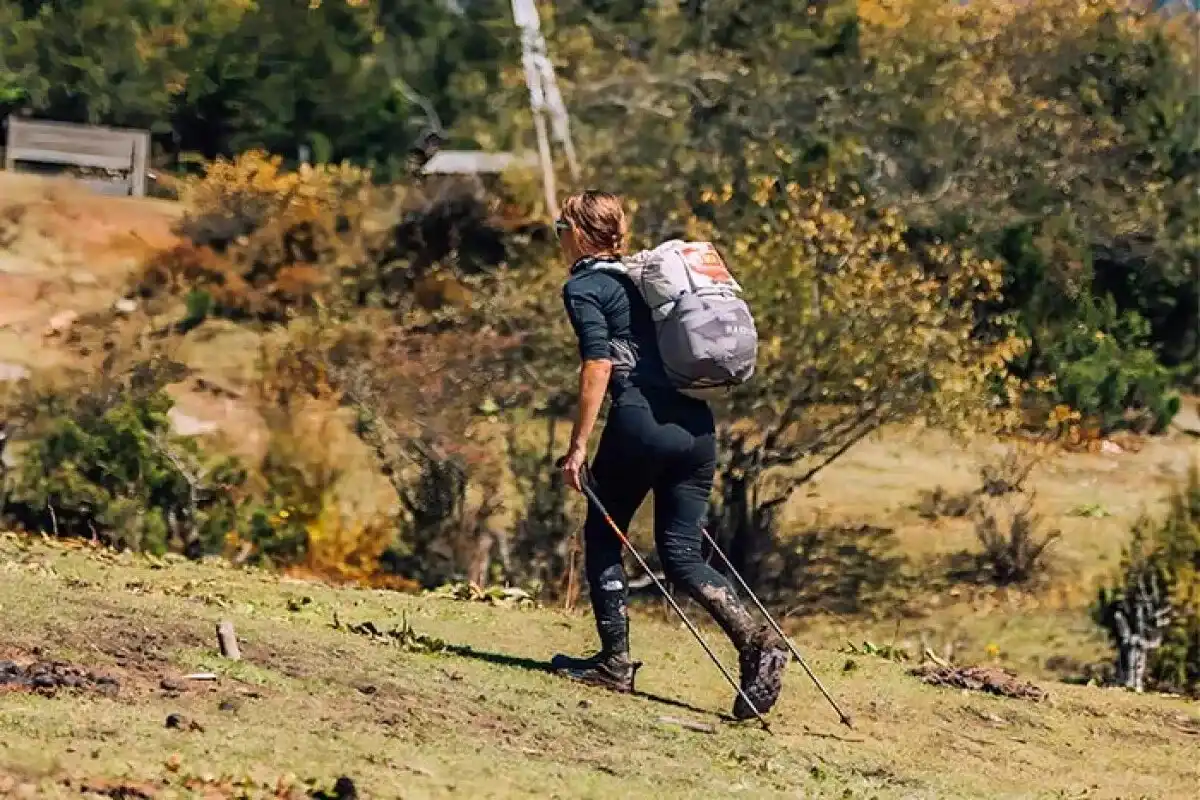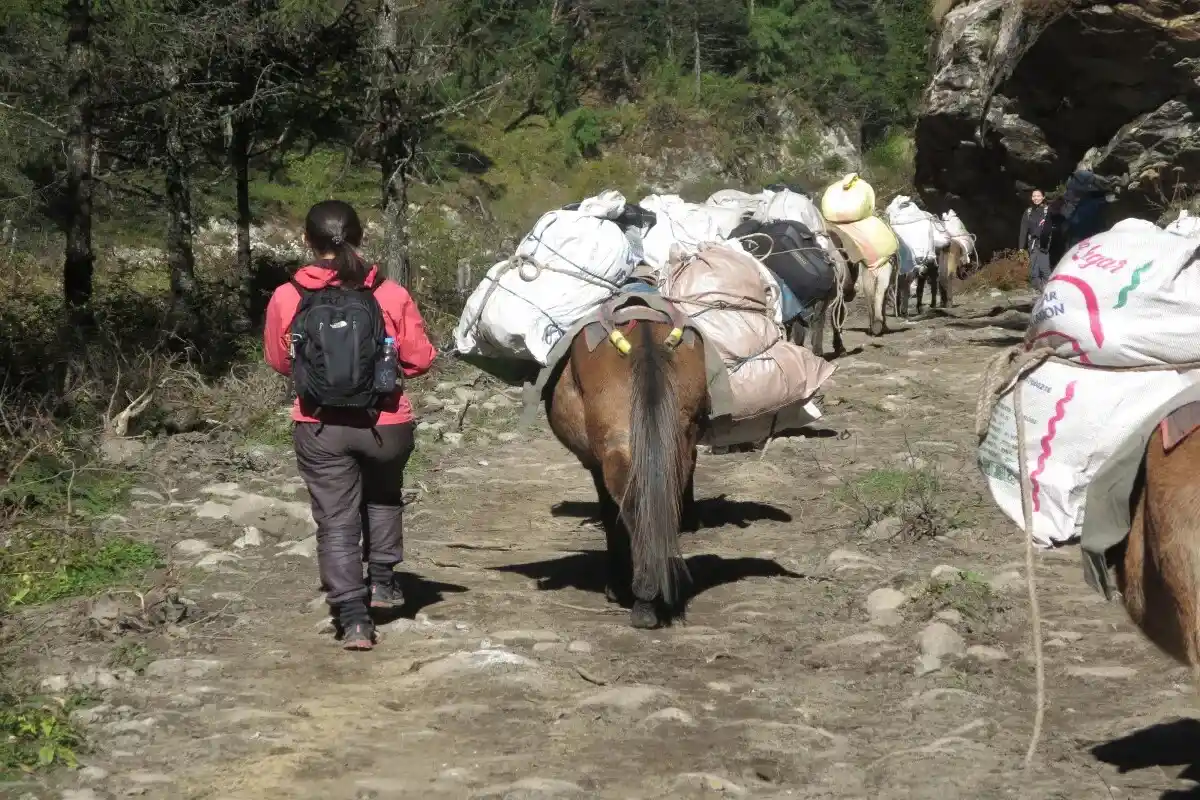Trekking to Taktsang Monastery - 4 Days
Tiger's Nest Monastery (Taktsang) is one of the most stunning and unique cultural landscapes in Bhutan, considered one of the most intact cultural landscapes in the country.
Highlights of the tour
- Visit Sacred Monasteries in Paro Valley
- Nature Walks and Acclimatization Hikes
- Hike to Taktsang Monastery
- Engage with Local Culture and Cuisine
- Experience tranquil times and stunning mountain scenery
Trip Overview
It is situated a few kilometers from the Paro Valley, a most beautiful but very steep cliff whose sight is visually dominating. Moreover, it is said to be where Guru Rinpoche imparted his meditation teachings and thus a very sacred and spiritual place. Not only is the trek to the Tiger's Nest tough, but it is also a peaceful and beautiful tour of nature and culture. It is a 4-day short trip for spiritual seekers and slow travellers. This schedule is no less than a kingdom tour, featuring simple Nature walks, temple visits, and cultural learning experiences in Bhutan. The trip would also provide some relaxing and meditative time, thus enabling the visitor to not only soak up the tranquility but also to be enchanted by the serene beauty of Bhutan. This trek is amazing as you will get to see and experience these beautiful sceneries and peaceful moments, and you truly get to know Bhutan.
Why the Tiger’s Nest Trek is Unmissable
The Tiger's Nest hike, being a wonderful combination of spirit, nature, and amazing views, is really hard to forget. The monastery is filled with divine power and associated with chants of Guru Rinpoche, who is thought to have practiced meditation there in the 8th century. Crossing green pine trees and passing down the stream will bring days of peaceful thinking and the beauty of nature on the way. Since it is both a pilgrimage and a conscious journey, it could be a nice combination of spiritual seekers, photographers, and nature lovers. You will not only delve into the woods of Bhutan at every step but also get to know yourself better.
Tour Highlights
This 4-day trek tour includes a moderate walk, colorful culture, and a stop by the holy place of Taktsang. The trip has been a very spiritual and pictorial experience, from the historical temples to the serene wooded area.
Visit Sacred Monasteries in Paro Valley
First of all, the Kyichu Lhakhang visit to Bhutan is highly recommended for your journey. Besides, this site is not only the most peaceful one but also the most famous in history. It’s impossible to ignore the surroundings, which offer a truly inspiring walk that deepens your connection to Bhutan’s spiritual traditions.
Nature Walks and Acclimatization Hikes
Before the big Tiger’s Nest hike, you enjoy nature walks in the area with short hikes through the pine forest, the local villages, and the monasteries that are located on the hillside. These walks are good for the body and health acclimatization, and for getting a close view of Bhutan's nature and country life. In fact, it is a great way to start the trek at a slower pace and get a sense of the beautiful and serene surroundings.
Hike to Taktsang Monastery
The Tiger's Nest hike is the main highlight of your entire journey, a 4 km ascent to the breathtaking Taktsang Monastery that seems like clinging to the cliffside. Along the way, you will see untouched nature, quiet woods, and enjoy fresh air. It is going to be a bit tough, yet a calm hike where you will feel a peaceful spirit. The hike involves exploring the forests and enjoying the peaceful nature. It's also a spiritual experience that you will always remember.
Engage with Local Culture and Cuisine
A wonderful way to know Bhutan within this limited time would be through its delicious food and the loving and warm hospitality, which are the two most typical things of a trip to Bhutan. You can enjoy Bhutanese dishes like red rice and ema datshi, whether you eat at a local restaurant or share a meal with a family at your homestay. Besides, locals' meetings are a great idea if you want to know the customs, facts, and manners of the people of Paro Valley.
Experience tranquil times and stunning mountain scenery
The trip to Tiger's Nest and the walk through the forest are such that the magical wooded valleys and the wonderful Himalayan peaks seem to go around and surround you at the same time. Perfect silence and the pure mountain air will give you back your lost energy, thus making the trek memorable.
Spiritual and Cultural Essence of the Trek
The Taktsang Monastery trek is both a physical and a spiritual journey. The monks of the Nyingmapa sect of Tibetan Buddhism believe it is the place where Guru Rinpoche came to meditate. Thus, the whole path is decorated with prayer flags that carry stories, prayers, and peace. Maybe you are walking by such holy places; stop for a while, take a deep breath, and meditate. Not only that, but the proper and silent temple with all its grandeur and reverence is largely its charm and sacredness. The Walk will be a unique single journey for travelers who deeply think about themselves, meditate, want to be with nature, and discover Bhutan spiritually while visiting it.
Conclusion
The 4-Day Taktsang Trek is an impressive and unspoiled nature of Bhutan. This trip would be ideal for a solo traveler or a group of friends for any occasion. This trek gives you an opportunity to experience spiritually the country of Bhutan. If in the year 2025 you were a tourist planning your next getaway, this walk would be the best nature and culture mixture for you. So, don’t miss this amazing trek in the beautiful Himalayas.
It is situated a few kilometers from the Paro Valley, a most beautiful but very steep cliff whose sight is visually dominating. Moreover, it is said to be where Guru Rinpoche imparted his meditation teachings and thus a very sacred and spiritual place. Not only is the trek to the Tiger's Nest tough, but it is also a peaceful and beautiful tour of nature and culture. It is a 4-day short trip for spiritual seekers and slow travellers. This schedule is no less than a kingdom tour, featuring simple Nature walks, temple visits, and cultural learning experiences in Bhutan. The trip would also provide some relaxing and meditative time, thus enabling the visitor to not only soak up the tranquility but also to be enchanted by the serene beauty of Bhutan. This trek is amazing as you will get to see and experience these beautiful sceneries and peaceful moments, and you truly get to know Bhutan.
Why the Tiger’s Nest Trek is Unmissable
The Tiger's Nest hike, being a wonderful combination of spirit, nature, and amazing views, is really hard to forget. The monastery is filled with divine power and associated with chants of Guru Rinpoche, who is thought to have practiced meditation there in the 8th century. Crossing green pine trees and passing down the stream will bring days of peaceful thinking and the beauty of nature on the way. Since it is both a pilgrimage and a conscious journey, it could be a nice combination of spiritual seekers, photographers, and nature lovers. You will not only delve into the woods of Bhutan at every step but also get to know yourself better.
Tour Highlights
This 4-day trek tour includes a moderate walk, colorful culture, and a stop by the holy place of Taktsang. The trip has been a very spiritual and pictorial experience, from the historical temples to the serene wooded area.
Visit Sacred Monasteries in Paro Valley
First of all, the Kyichu Lhakhang visit to Bhutan is highly recommended for your journey. Besides, this site is not only the most peaceful one but also the most famous in history. It’s impossible to ignore the surroundings, which offer a truly inspiring walk that deepens your connection to Bhutan’s spiritual traditions.
Nature Walks and Acclimatization Hikes
Before the big Tiger’s Nest hike, you enjoy nature walks in the area with short hikes through the pine forest, the local villages, and the monasteries that are located on the hillside. These walks are good for the body and health acclimatization, and for getting a close view of Bhutan's nature and country life. In fact, it is a great way to start the trek at a slower pace and get a sense of the beautiful and serene surroundings.
Hike to Taktsang Monastery
The Tiger's Nest hike is the main highlight of your entire journey, a 4 km ascent to the breathtaking Taktsang Monastery that seems like clinging to the cliffside. Along the way, you will see untouched nature, quiet woods, and enjoy fresh air. It is going to be a bit tough, yet a calm hike where you will feel a peaceful spirit. The hike involves exploring the forests and enjoying the peaceful nature. It's also a spiritual experience that you will always remember.
Engage with Local Culture and Cuisine
A wonderful way to know Bhutan within this limited time would be through its delicious food and the loving and warm hospitality, which are the two most typical things of a trip to Bhutan. You can enjoy Bhutanese dishes like red rice and ema datshi, whether you eat at a local restaurant or share a meal with a family at your homestay. Besides, locals' meetings are a great idea if you want to know the customs, facts, and manners of the people of Paro Valley.
Experience tranquil times and stunning mountain scenery
The trip to Tiger's Nest and the walk through the forest are such that the magical wooded valleys and the wonderful Himalayan peaks seem to go around and surround you at the same time. Perfect silence and the pure mountain air will give you back your lost energy, thus making the trek memorable.
Spiritual and Cultural Essence of the Trek
The Taktsang Monastery trek is both a physical and a spiritual journey. The monks of the Nyingmapa sect of Tibetan Buddhism believe it is the place where Guru Rinpoche came to meditate. Thus, the whole path is decorated with prayer flags that carry stories, prayers, and peace. Maybe you are walking by such holy places; stop for a while, take a deep breath, and meditate. Not only that, but the proper and silent temple with all its grandeur and reverence is largely its charm and sacredness. The Walk will be a unique single journey for travelers who deeply think about themselves, meditate, want to be with nature, and discover Bhutan spiritually while visiting it.
Conclusion
The 4-Day Taktsang Trek is an impressive and unspoiled nature of Bhutan. This trip would be ideal for a solo traveler or a group of friends for any occasion. This trek gives you an opportunity to experience spiritually the country of Bhutan. If in the year 2025 you were a tourist planning your next getaway, this walk would be the best nature and culture mixture for you. So, don’t miss this amazing trek in the beautiful Himalayas.
Short Itinerary
Arrive in Paro, visit Kyichu Lhakhang and acclimatization hike nearby
Explore Paro Dzong and National Museum, scenic hike to Zuri Dzong or Dzongdrakha Monastery
Trek to Tiger’s Nest Monastery, enjoy tea at viewpoint café, evening cultural show
Breakfast with guide, transfer to Paro Airport and departure
Trekking to Taktsang Monastery Itinerary
Upon your arrival at Paro, you will meet a guide who will drop you off at your hotel. After having a rest for a while, immerse yourself in the culture of Bhutan by exploring
Kyichu Lhakhang, the most ancient temple of Bhutan. Then, walk around Paro to explore the local stores and enjoy the peaceful atmosphere. In the afternoon, you will be taken on a short and easy hike to a forested ridge or a village nearby to begin altitude acclimatization. The day is over with a welcome feast and a briefing about the forthcoming Tiger’s Nest trek.
On the morning of your second day, you can immerse yourself in the history and the architecture of Bhutan through Paro Rinpung Dzong and the National Museum of Bhutan - two places that give you a deep insight into Bhutan’s history and architecture. Afterward, you might take a short and beautiful walk at Zuri Dzong or Dzongdrakha Monastery, which not only gives you amazing views of the valley but is also the perfect place to get acquainted with the higher altitudes. In addition, these peaceful walks allow you to experience a moment of silence. Eventually, you will get the chance to rest and recharge at your hotel. In addition, you could treat yourself to a lovely hot stone bath or simply have a meditation session with a guide to relax your mind and body before the hard hike tomorrow.
What you must do first is leave the trail to have an awesome hike to Tiger's Nest. For the first 4 km, go up the hill. It will take you about 2 - 3 hours. You will walk across the beautiful pine forests, and you can see the prayer flags. At an elevation of 3,120 meters is the cliff on which the Taktsang Monastery is located. Inside the temple, it is very holy and peaceful, so you'd better meditate quietly.
Before you descend, you can enjoy tea at the viewpoint café. In Paro, relax and think about your trip. Have a cultural show or storytelling to wrap up in the evening.
After your trip comes to an end, have breakfast with your guide. It usually takes twenty to thirty minutes on average to reach the airport. During the drive, recall the photos you took and the memories you created. Moreover, keep in mind the peacefulness that you felt. The trek to Tiger's Nest, although tough, is quite satisfying at the final moment. The memory will stay with you for a long time.
Know Before You Travel
-
Best season for the trip:
Trekking the Tiger's Nest is the best thing to do in spring (March–May) or Autumn(September–November). Spring has blossoming rhododendrons, blue skies, and nice weather, while Autumn provides great views, dry trails, and quite a few festivals such as Paro Tsechu. Despite being very green, the rain in summer would make the trek not very enjoyable. Winter is very cold but calm, with fewer tourists and peaceful surroundings. You can make your trek more wonderful by choosing festival seasons as your time; not only will it enable you to see the fantastic culture, ancient dances, and spiritual celebrations of Bhutan, but also to have a beautiful trip.
FAQs for Trekking to Taktsang Monastery
Tiger's Nest hike is a medium difficulty trek that an ordinary person can carry out. Generally, the upward climb of 4 km is done in 2 to 3 hrs; thus, the total time of the hike depends on the trekkers' pace. However, even on a well-marked path, there are some parts that are very steep.
Indeed, the trail is equally suitable for beginners with an average fitness level. In case of fatigue, there is the option of taking a horse to the top for the descent.
Trekking definitely requires some basic and very practical gear. Among those gears, you should carry comfortable, non-slip walking shoes, clothes that are suitable for the weather, a small backpack, sun protection like sunscreen, sunglasses, a hat, etc., plus a reusable water bottle.Trekking poles are great, especially when you go down a hill.
Taktsang Monastery is definitely an open facility 365 days a year, except for the time of religious ceremonies and cold weather conditions. If views are to be clear and mild temperatures are to be enjoyed, then spring and autumn are the nicest seasons to visit.
Of course, this trip can be customized according to your needs. But you have to inform us when you book your trip and pay the charges accordingly.
You need a visa and all necessary permits for your trip. These documents can not be received on the day of your arrival, so they must be processed before coming here. After you book a trip with us, we will manage these papers for you. Your Bhutan visa is arranged by Orrog as part of the package.
The main way to come to Bhutan is through Paro International Airport, which is well-connected to cities like Bangkok, Delhi, Kathmandu, and Singapore. Most people arrive by air, but if you plan to come via road, you can enter through Phuentsholing, located on the southern border with India, which is the most commonly used entry point.
It is recommended to apply for the visa at least 20 days before your planned departure date so that there is enough time for processing your Bhutan visa, finalizing your itinerary, and arranging your guides and transportation. Although visa processing itself is relatively fast once payment is received, early preparation helps avoid delays and ensures availability, especially during peak seasons (spring and autumn).
You don’t require a passport-size photo for the visa, but it is wise to carry at least 2–4 recent passport-sized photographs during your trip. These may be needed for local permits, registration, or when applying for a local SIM card upon arrival in Bhutan.
Yes, you can lengthen your stay in Bhutan either before or after your trip. Bhutan’s tourism model requires visitors to pay a Sustainable Development Fee (SDF) and a daily package cost, so any extra days will involve additional charges. Extensions are a great opportunity to explore cultural sites in Paro, Thimphu, or even add another short trip or day hike.
Yes, Bhutan requires full tour payment in advance before your visa can be processed and issued. The government of Bhutan regulates this policy to ensure that all travel arrangements are confirmed through a licensed Bhutanese tour operator. We are a licensed tour operator that ensures you have everything you need for a trouble-free trip.
Any personal expenses are not covered in the package like:
- Tips for your guide and other staff
- Bottled drinks and snacks(personal expense)
- Souvenirs or local crafts
Credit cards are easily accepted in major cities like Paro and Thimphu. But in remote areas, you may not have access to a card or an ATM. So, it is best to carry some cash before heading for the trip.
Tipping is not mandatory, but it is a widely appreciated gesture and a customary way to show gratitude for good service. The tipping guideline would be to give USD 5-10 per day as a tip for the guides and other staff.
Paro International Airport is the only international airport in Bhutan. It is well connected by flights from cities like Bangkok, Delhi, Kathmandu, and Singapore.
Yes, airport pick-up and drop-off are included in the package. We will have your guide and driver meet you at the airport and transport you to your hotel.
While Bhutan's roads are mostly paved, some parts are narrow, winding, and occasionally affected by weather. However, we ensure your travel is safe, well-maintained, and driven by an experienced professional throughout the journey.
The Bhutanese Ngultrum is used in Bhutan. All local transactions during the trip will be in BTN.
US Dollars (USD) are generally accepted at larger hotels, souvenir shops, and tour operators, particularly in Paro and Thimphu. However, it’s advisable to convert your currency to BTN for general purchases in rural areas. Other currencies like the Euro or the Pound are not commonly accepted directly.
No, credit or debit cards are not accepted on the trip, as it takes you through remote regions with no banking or electronic payment access. All trip-related payments like accommodation, meals, permits, etc, are paid in advance.
You can exchange foreign currency at the Paro International Airport, at banks, or through licensed money changers in cities like Thimphu and Paro. It's best to exchange enough cash before heading out on the trip.
The national language is Dzongkha, but many Bhutanese also speak English. If you speak English and are worried about communicating with the local people, you will have your guide as a translator.
Yes, all licensed tour guides in Bhutan are required to speak fluent English. Many are also trained in other languages such as German, Japanese, or French. Communication during the trip will be smooth and clear in English.
Most signboards, tourist maps, and information brochures are written in English, especially in tourist destinations like Paro, Thimphu, and trailheads. Directional signs along routes are often labeled in both Dzongkha and English.
No, learning Dzongkha is not at all needed for the trip, but knowing a few basic words like "Kuzu zangpo la" (Hello) or "Kadrinche la" (Thank you) is a good way to interact with the locals.
Language barriers are minimal, as your guide will handle all communication with locals and support staff. Your guide will translate for you during your interaction with the locals.
To greet people, you can greet with locals “Kuzu zangpo la” (Hello) by performing a slight bow. Most common greetings include physical greetings, such as shaking hands less visible, especially in rural areas.
Yes, but remember to seek permission, especially when taking photos of monks, locals, or temples. Please note that clicking photos is not allowed at most religious sites.
Visitors should dress modestly and respectfully. This means:
- Covering shoulders and knees
- Removing hats and sunglasses
- Not wearing shorts or sleeveless tops
This applies to both men and women.
Yes, Bhutanese society is deeply rooted in Buddhism and tradition. Here are some key taboos:
- Do not point your feet at people or sacred objects
- Never touch anyone on the head, as it is considered sacred
- Walk clockwise around temples, stupas, and religious monuments
- Avoid public displays of affection
While gifts are not expected, they may be accepted graciously if given with respect. It is advisable to consult with the guide before giving out anything.
Bhutan typically uses Type C, Type D, and Type G electrical outlets. Standard safe voltage is 230V and frequency is 50Hz; therefore, ensure that your equipment is compatible with this voltage.
Indeed, it is highly advised to take along a universal travel adapter, particularly one to fit a variety of types of plugs, because plugs can be different in a hotel or a guesthouse.
Charging facilities are limited during the travel days, particularly once you leave Paro. It’s a good idea to bring a high-capacity power bank to keep essential electronics like cameras or phones powered.
Power supply in towns like Paro and Thimphu is generally stable, but occasional power cuts do happen, especially during storms or in rural areas. It's wise to charge your devices whenever electricity is available.
Bhutan follows Bhutan Time (BTT), which is UTC/GMT +6 hours. This time zone remains consistent throughout the year.
No, Bhutan does not observe daylight saving time. The country maintains the same time year-round.
Bhutan is 30 minutes ahead of India. For example, 12:00 PM in India is 12:30 PM in Bhutan.
Yes, snow is quite likely, especially at higher elevations, which are above 4,800 meters. If you trek during late autumn (October–November) or early spring (March–April), you may encounter snowfall. During the peak of spring (April–May) and autumn (September–early October), trails are usually clear, although sudden weather changes in the mountains can still bring unexpected snow showers. You should always be prepared for cold conditions and potential snowfall, regardless of the season.
No, Treks are not accessible throughout the year. The trail is generally closed during the winter(December- February) due to heavy snowfall that makes high mountain passes impassable and increases the risk of avalanches and extreme cold.
Since the weather can be unpredictable and temperatures can vary drastically, layered clothing is essential. You should pack:
- Base layers (thermal tops and bottoms)
- Insulating layers like fleece or down jackets
- Waterproof and windproof outer layers
- Warm hats, gloves, and neck gaiters for freezing conditions
- Moisture-wicking socks and weatherproof trekking boots
The weather is clear with mild daytime temperatures during spring and autumn. But you will be travelling in high altitudes, so it is necessary to carry enough clothing because you will encounter lower temperatures. The nights are freezing cold at high altitudes. So, pack accordingly.
Yes, it the trek is suitable for beginners.
This trip is mainly for people aged between 12 and 65. But if you are physically fit and have the willpower to complete this trek, you can complete this trek because we will be there to help you in case of any problem.
A Medical certificate is not mandatory, but a health check-up is advised. Since the trek reaches altitudes over 4,800 meters (15,750 feet), you can have a normal checkup before the trek to make sure that you have no ongoing issues.
Yes, your children can join the trek if they are in good physical condition, which requires walking for a few hours every day. They should have parental guidance during the trek.
Yes, senior citizens can participate, given that they are fit to complete this trek. A visit to the Doctor is strongly advised, and seniors should engage in pre-trek training to improve stamina and cardiovascular health.
During this Trek, you will stay in tented camps at remote, scenic campsites along the trail. These camps are fully supported and managed by us. Before and after the trek, you will stay in comfortable hotels or guesthouses in Paro and Thimphu. All accommodations are arranged by us as part of your package.
Yes, all campsites are carefully chosen, keeping safety, cleanliness, and hygiene in mind. Orrog follows strict sanitation practices, including setting up toilet tents, safe waste disposal, and clean food preparation areas. You’ll also be accompanied by well-trained staff to ensure your safety during the trip.
Yes, we provide a high-quality sleeping bag in the package, which is suitable for sub-zero temperatures of the high-altitude regions. However, you can bring your sleeping bag if you prefer additional comfort or hygiene.
Yes, hot water for drinking is available at camps, but not hot water for showers. You can carry biodegradable wet wipes for convenience.
Each campsite is equipped with portable toilet tents or simple pit latrines, maintained by the support team to ensure cleanliness and privacy. While they are basic, they are safe, hygienic, and environmentally conscious. It is advisable to carry your toilet paper, hand sanitizer, and eco-friendly toiletries to maintain hygiene during the trek.
If you experience symptoms such as headache, nausea, dizziness, or fatigue, your guide will have you rest, hydrate, and monitor your condition closely. If symptoms worsen, you will be taken to a lower altitude immediately, which is the most effective treatment. All treks are designed with gradual altitude gain and acclimatization days to minimize the risk.
Yes, emergency helicopter evacuation is available in Bhutan and can be arranged in serious cases such as severe altitude sickness or injury. However, helicopter rescue is costly and not included in standard trek packages, so having travel insurance that covers emergency evacuation is mandatory. Guides and tour operators are trained to handle emergencies efficiently and will contact authorities for evacuation if needed.
This trek is moderate to tough with 6–8 hours of walking per day across rugged terrain and steep trails. The altitude, length, and remote conditions require good physical fitness and preparation.
Yes, emergency helicopter evacuation is available in Bhutan and can be arranged in serious cases such as severe altitude sickness or injury. However, helicopter rescue is costly and not included in standard trek packages, so having travel insurance that covers emergency evacuation is mandatory. Guides and tour operators are trained to handle emergencies efficiently and will contact authorities for evacuation if needed.
Yes, travel insurance is mandatory for all international travelers visiting Bhutan, especially for those trekking at high altitudes. Your insurance must cover:
- Emergency medical treatment
- High-altitude trekking (above 4,000 meters)
- Helicopter evacuation and return to the home country
- Trip cancellation or delay
Proof of insurance may be requested before your visa is processed. Make sure to read your policy details carefully or consult with your insurance provider before travel.
Yes, travel insurance is mandatory for this trek. Your policy must include coverage for high-altitude trekking (above 4,000 meters), medical emergencies, and helicopter evacuation, as these services can be very costly in remote Bhutanese terrain. Proof of insurance may be required by your tour operator before confirming the trek.
Mobile network coverage is extremely limited along the Trek. While you may get occasional signal in some lower-altitude areas or villages, most of the trail is out of range, especially near the high passes and campsites. It’s best to inform family and friends that you may be offline for several days.
Charging facilities are not available on the trail since the trek passes through remote and non-electrified areas. It is strongly recommended to bring a high-capacity power bank or a solar charger to power essential devices like phones or cameras during the journey.
Yes, you should bring personal gear such as trekking boots, warm and waterproof clothing, gloves, hats, and a sleeping bag. The other necessary items will be managed by us.
Meals are prepared fresh daily by the trek support team and typically include Bhutanese and Tibetan-style dishes like rice, curries, noodles, soups, vegetables, and occasional meat. Tea, coffee, and snacks are also provided. If you have diet restrictions (vegetarian, vegan, gluten-free, etc.), inform your tour operator in advance so arrangements can be made.
Trekking in Bhutan follows strict environmental protocols, including the “Leave No Trace” principle. All trash is collected and carried out by the support team. Trekkers are expected to avoid littering and carry personal non-biodegradable waste, such as snack wrappers or batteries, back to base.
Yes, safe drinking water is provided each day. You are also encouraged to bring a refillable water bottle and, optionally, water purification tablets or a filtration bottle for additional safety and convenience.
You can prevent Altitude sickness by following these tips:
- Ascend gradually and allow time for acclimatization
- Drink plenty of fluids, preferably water and warm drinks
- Avoid alcohol and caffeine
- Eat light but frequent meals
- Communicate with your guide immediately if you feel unwell
Common symptoms include:
- Headache
- Nausea or vomiting
- Dizziness or light-headedness
- Shortness of breath
- Loss of appetite
- Fatigue or difficulty sleeping
Occasionally, you might meet villagers selling handmade items like yak wool scarves or woven baskets near campsites or small settlements. These are authentic and support local communities.
Only some larger shops in cities like Paro and Thimphu accept credit cards. The remote areas might not have a card payment option, so we suggest that you carry some cash.
Yes, souvenirs can be bought in Paro or Thimphu before or after the trip.
Some popular souvenirs include hand-woven textiles (kira and gho fabric), prayer flags, thangka (religious scroll) paintings, handmade paper products, traditional masks, and Buddhist artifacts.
You can do some gentle bargaining in local street markets. However, in government-run shops and fixed-price stores, prices are usually non-negotiable.
Yes, it is highly recommended to inform friends and family before the trip that you will be offline for several days, so they are not concerned by the lack of communication.
B-Mobile (by Bhutan Telecom) and TashiCell are the two main service providers. B-Mobile tends to have better coverage in rural and mountainous areas.
Yes, you can easily purchase a SIM card upon arrival in Bhutan. We will assist you with the process, and you'll need a passport copy and a passport-sized photo.
No, internet access is not available during the trip. However, Wi-Fi is available in hotels in Paro and Thimphu before and after the trip.
Reviews & Ratings
-
Guarantee -
Thimphu,Bhutan -
975+17160228
Ready to Explore Bhutan?
Start your journey today and discover the magic of Bhutan with our expert guides and carefully crafted tours.
Book This Trip
-
No booking or credit card fees -
Best price guarantee -
Full customize trip
Ask a Question
Feel free to ask us anything about this tour. A travel expert will then get back to you as soon as possible
Ready to Explore Bhutan?
Start your journey today and discover the magic of Bhutan with our expert guides and carefully crafted tours.

